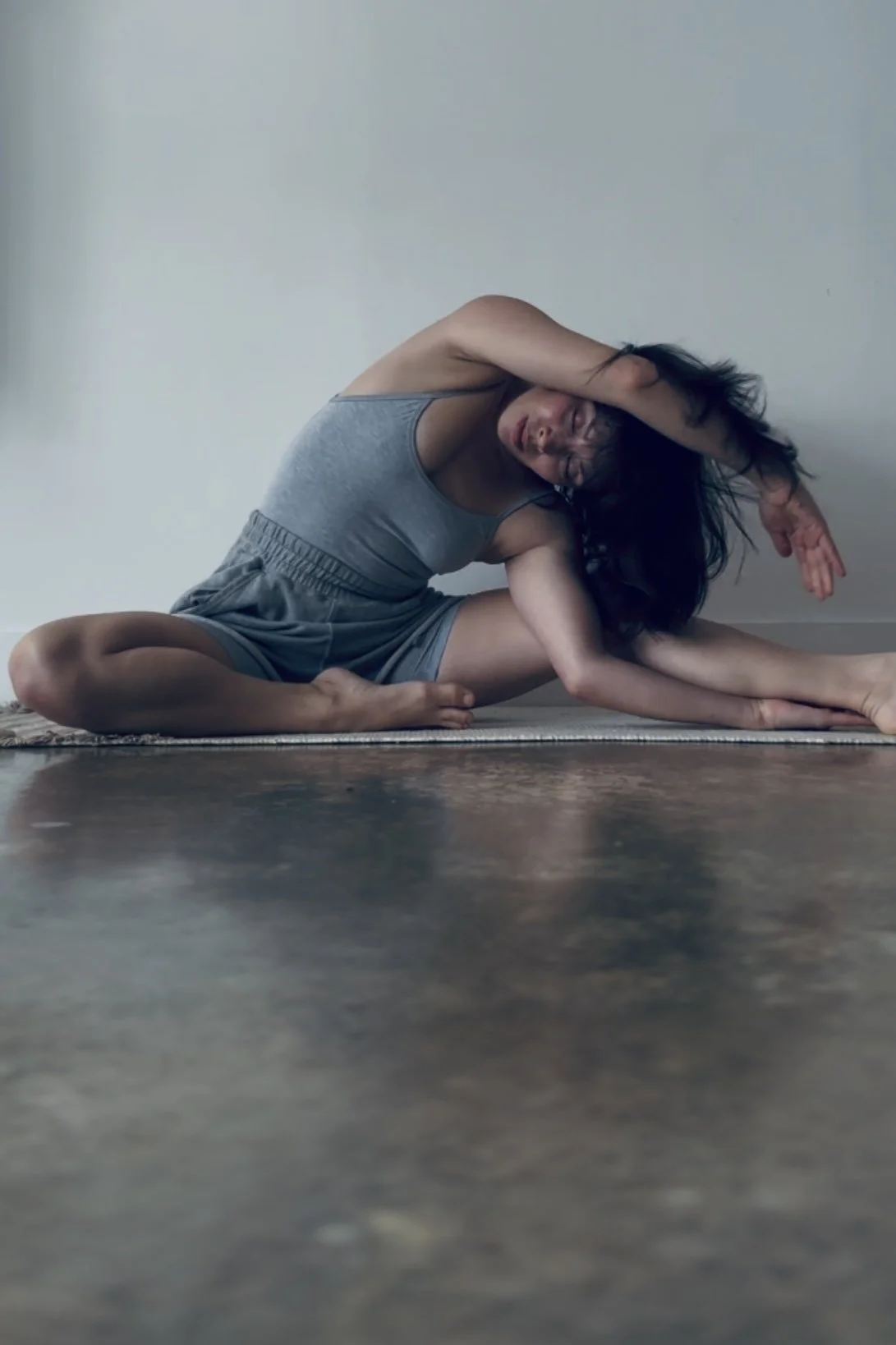5 Ways To Transform Your Practice
A Listening Movement Approach To Exercise
1. Replace Judgment with Curiosity
Have you ever been around a crying baby?
It doesn’t help to tell that baby to stop crying, you need to figure out why it’s crying and address its needs.
Ideally, you look for clues, and you respond with care.
Your body is no different.
Pain, tension, and fatigue can carry important messages for you.
Those tight hamstrings of yours have wisdom to share with you, but if you stop at judgment, you miss all the nuance and uniqueness of your own body.
Curiosity can turn discomfort into dialogue.
Replace fixing a “problem” with curiosity: What’s happening here?
When we stop labeling sensations as bad, we start listening.
2. Move to Nurture, Not to Punish
What if movement were a return to yourself?
For a long time, I exercised with the belief that if I was happy with myself as I was, then I would never improve. Or worse—I would fall apart! That couldn’t have been further from the truth. As I made my way towards movement for the joy of it, as I moved to celebrate my body, to show love for my existence, I found that I wanted more of it, that I felt better, that I was motivated to take care of myself, not punish. It was more sustainable, and a lot more enjoyable. Even challenging exercises like sprints and lifting heavy could be fun. And now, I think of me and my body as on the same team.
Movement can be an act of care.
3. Stay Engaged
This one’s a double entendre.
Think of a cat taking a little movement break, as it paws the ground, purring and slinking, it is engaged in its body, and also fully engaged in the moment.
When we stay engaged in our muscles as we stretch, we are also re-tuning our fascia, the connective tissue that’s giving form to your whole body.
And when we keep our attention engaged in what we’re doing, we can learn so much from our experience.
I’ve definitely been one to watch netflix while I’m on the treadmill. Sometimes that has its own rewards.
But when I really want to nurture my body and my movement practice, I make sure my attention is on me.
4. Stay Open
Did you know your brain filters out most of what’s around you?
It doesn’t even show you your nose, it just edits it out.
Adding to that, your body speaks in a language beyond words.
So what else are we missing?
In the safety of a movement practice, we can open ourselves to the richness of our senses—something that might feel less efficient or safe to do in our daily lives:
When you stretch, what color do you see?
What memories arise?
What’s the tone of your thoughts?
Openness invites richness.
Sometimes, the relief is realizing you don’t need all the answers after all.
5. It’s About the Journey
I’ve learned this lesson time and time again in my studio. Clients come in with symptoms. As we follow the sensations, feel into the tissues, and check in periodically, what brings relief is often counterintuitive. Healing rarely arrives from chasing a goal.
Relief often comes from a place we never expected.
Same with my partner. In therapy, we start with a topic, and next thing we know, we are looking into a hidden pocket of stories and emotions that have been steering the ship.
In therapy, I seek connection with my partner.
In movement, it’s connection with myself.
So I loosen the grip on goals, and trust the journey will lead me.
Want to experience this for yourself?
Join The Listening Movement membership for guided practices, live classes, and somatic support rooted in TCM and fascia wisdom.
Your body already knows. This is your space to listen.
